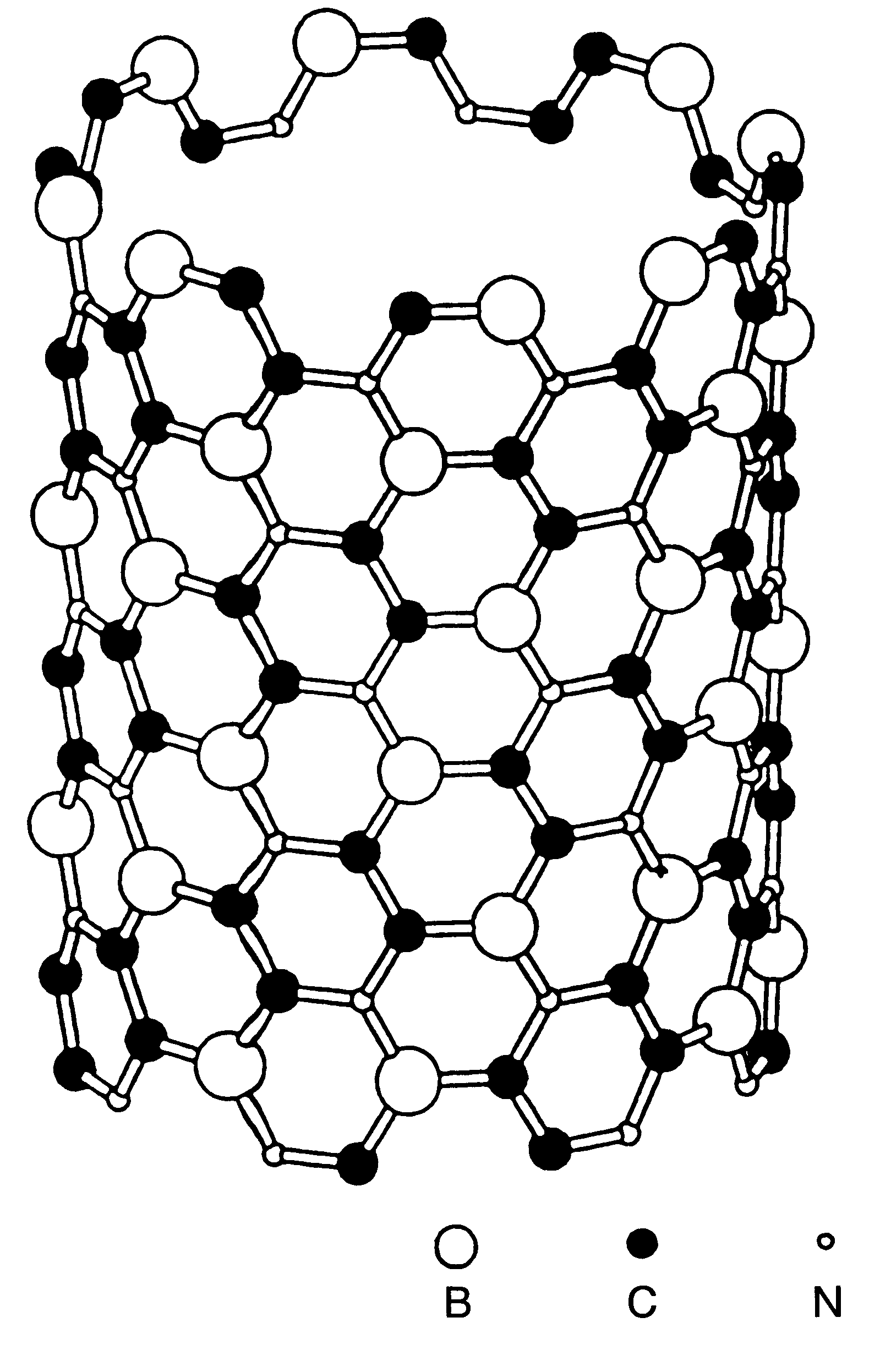BX CY NZ nanotubes and nanoparticles
a technology applied in the field of nanotubes and nanoparticles, can solve the problems of reducing mechanical strength, non-uniform electronic properties, and realizing the utility of carbon nanotubes
- Summary
- Abstract
- Description
- Claims
- Application Information
AI Technical Summary
Benefits of technology
Problems solved by technology
Method used
Image
Examples
Embodiment Construction
The present invention comprises nanoscale tubes and nanoparticles made essentially from carbon combined with boron and / or nitrogen. In a different embodiment, the inventive nanotubes and nanoparticles comprise essentially only boron and nitrogen.
To understand the structure of the nanotubes and nanoparticles it is useful to consider a theoretical model comprising a two-dimensional planar arrangement, or sheet, of atoms that is rolled to form a tube. In a theoretical model atoms of boron, carbon, and nitrogen are arranged in a honeycomb lattice of hexagonal rings. The sheet is rolled up and spliced together to form a tube. That is, the tube is a conformal mapping of the two dimensional sheet onto the surface of a cylinder. The two-dimensional lattice sheet can be rolled many different ways to form a tube. The nanotube index describes how a sheet is rolled into the tube. A special circumference vector is related to the number of adjacent hexagonal carbon rings that are traversed when t...
PUM
| Property | Measurement | Unit |
|---|---|---|
| Electrical inductance | aaaaa | aaaaa |
| Ratio | aaaaa | aaaaa |
| Mechanical properties | aaaaa | aaaaa |
Abstract
Description
Claims
Application Information
 Login to View More
Login to View More - R&D
- Intellectual Property
- Life Sciences
- Materials
- Tech Scout
- Unparalleled Data Quality
- Higher Quality Content
- 60% Fewer Hallucinations
Browse by: Latest US Patents, China's latest patents, Technical Efficacy Thesaurus, Application Domain, Technology Topic, Popular Technical Reports.
© 2025 PatSnap. All rights reserved.Legal|Privacy policy|Modern Slavery Act Transparency Statement|Sitemap|About US| Contact US: help@patsnap.com



